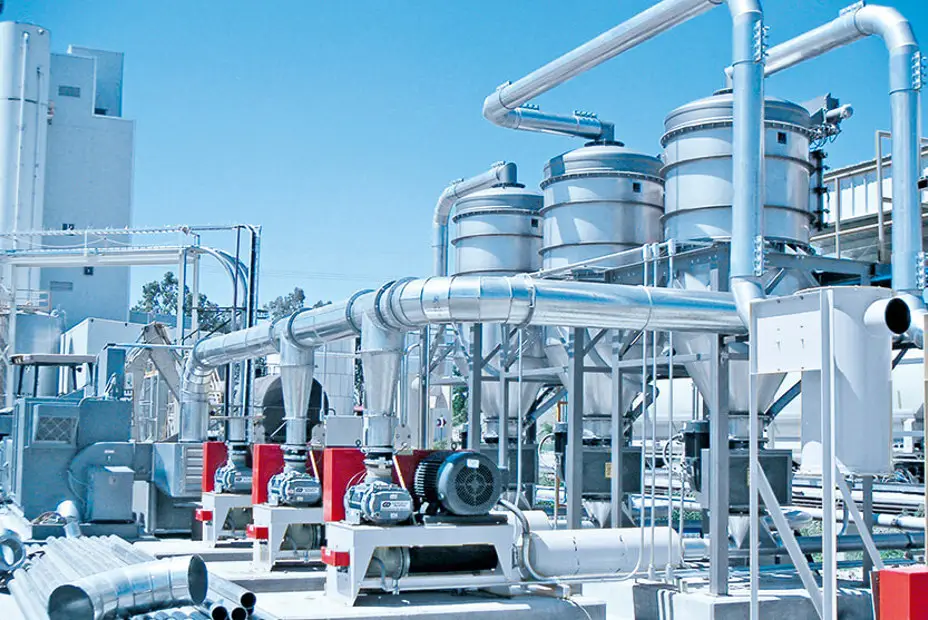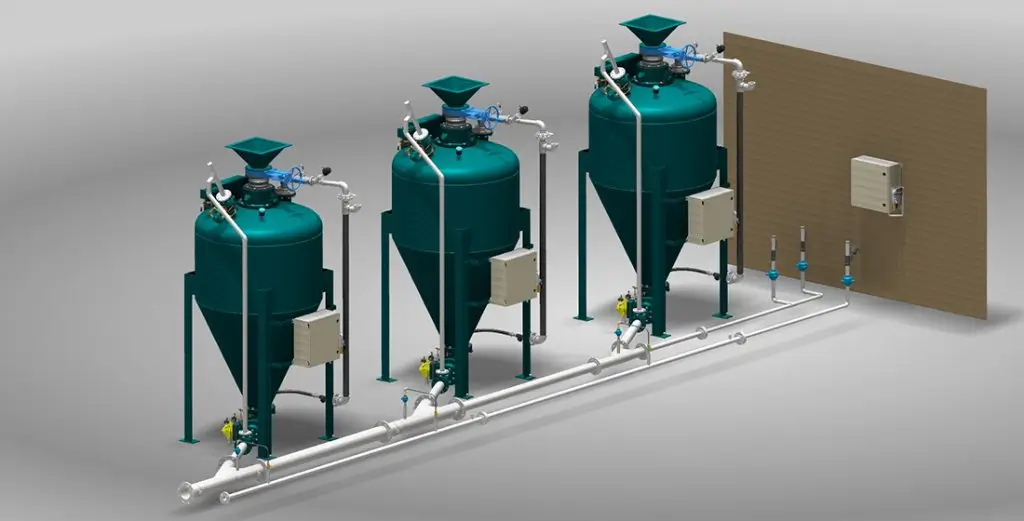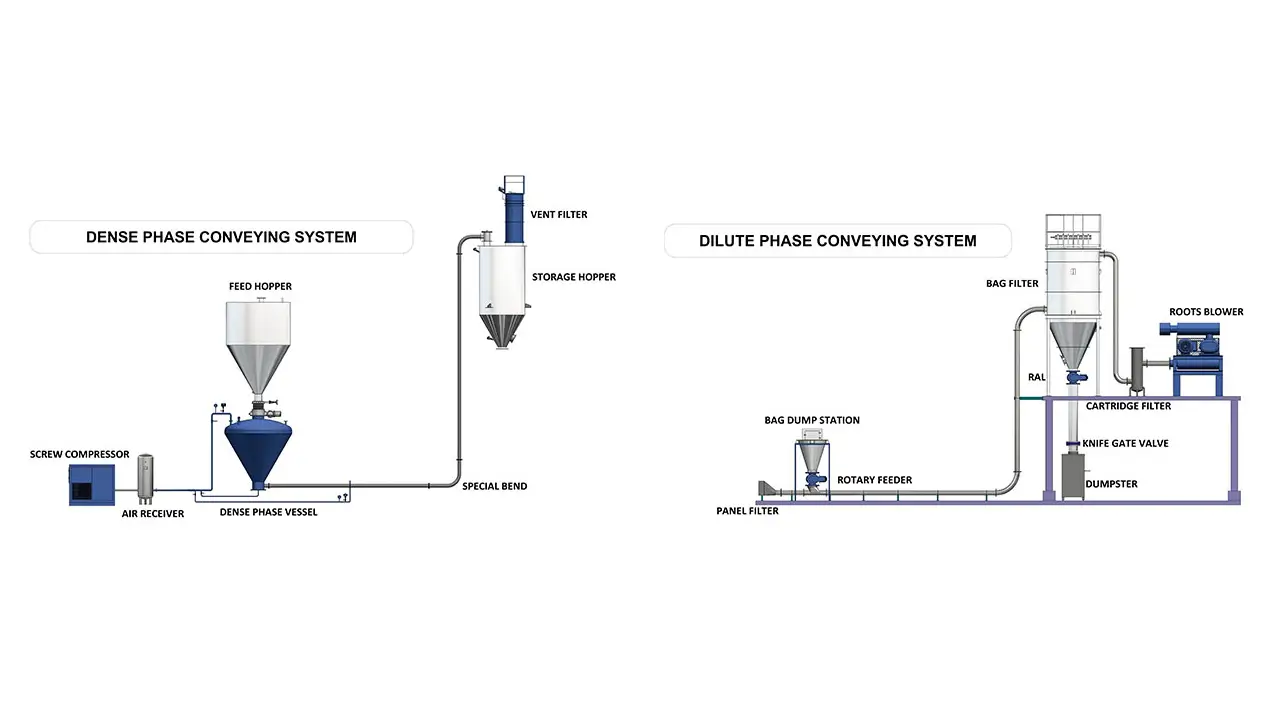Selecting the optimal pneumatic conveying system—whether dilute phase or dense phase—begins with understanding your material flow characteristics. Once that’s determined, consider these key design aspects:
- Facility Design Considerations:
- Process Connection:
Ensure proper interfacing between production processes by selecting the appropriate inlet and outlet configurations. - Material Characteristics & Process Standards:
Evaluate the properties of the materials and the relevant process standards, as these greatly influence the conveying design. - Environmental Protection:
Address exhaust gas treatment and noise control to meet environmental regulations and create a safe working environment.
- System Layout:
- Component Placement:
- Position the feeder or suction nozzle at the starting point.
- Locate the separator at the endpoint.
- Arrange the air compressor and ancillary facilities logically within the plant.
- Pipe Configuration:
- Minimize the number of elbows and avoid excessively long horizontal runs to reduce pressure loss.
- Insulate pipes that span indoor and outdoor environments to prevent condensation from temperature differences.
- Fittings:
Avoid placing fittings on material conveying pipes if they could impede smooth flow.
- Determination of Core Components and Structures:
- System Types:
- Suction-Type Systems:Utilize nozzles and separators.
- Pressure-Type Systems:Use feeders and separators.
- Cylinder Conveying:Typically incorporates transmitters.
- Reciprocating Conveying:May include exchange stations.
- Automation:
Integrate automatic control systems (program-based and route management) to enhance reliability and efficiency.
- Rough Estimation of System Energy Requirements:
- Energy Calculation:
Estimate energy needs as the product of required air volume and pressure. - Pressure Loss Estimation:
Perform rough calculations of system pressure loss to help size the compressor appropriately.
- Accurate Measurement of System Data:
- Detailed Analysis:
After establishing the initial system scheme, conduct precise, component-by-component calculations to finalize dimensions and ensure optimal performance.




